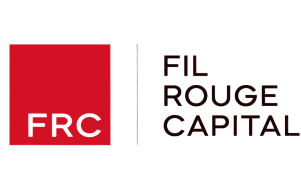

Introduction
As sustainable fashion trends gain momentum, the industry is witnessing a seismic shift towards eco-friendly materials. At Sabant, we're at the forefront of this revolution, crafting innovative plant-based leather alternatives that are reshaping the fashion landscape. In this article, we'll explore the exciting trends and innovations that are driving the future of sustainable fashion.
The Rise of Plant-Based Leather
One of the most significant sustainable fashion trends is the growing popularity of plant-based leather alternatives. These materials, derived from sources like pineapple leaves, cork, and even alcohol production waste, offer a cruelty-free and eco-friendly alternative to traditional leather.
Sabant's Gin skin™ and Beer skin™ are prime examples of this trend, showcasing the incredible potential of repurposing waste from the alcohol industry into high-quality, sustainable materials. As more brands embrace plant-based leather, we can expect to see a surge in innovative and stylish products that prioritize sustainability.

Recycled and Upcycled Materials
Another major trend in sustainable fashion is the use of recycled fabrics and upcycled materials. Brands are increasingly turning to post-consumer waste, such as plastic bottles and discarded textiles, to create new garments and accessories. This circular fashion approach reduces waste and minimizes the demand for virgin resources.
Sabant's commitment to upcycling is evident in our unique production process, which transforms gin distillation and beer production byproducts into beautiful, durable plant-based materials. By giving waste a second life, we're contributing to a more sustainable future for fashion.
Innovations in Sustainable Fabrics
The future of fashion also lies in the development of innovative sustainable materials. From biodegradable fabrics to textiles made from regenerative agriculture, the possibilities are endless. Researchers and brands are constantly pushing the boundaries to create materials that are not only eco-friendly but also high-performing and aesthetically pleasing.
Some exciting examples of innovative sustainable fabrics include:
Repurposing barley from alcohol production to craft high-quality, plant-based leather. It’s durable, versatile, and most importantly, sustainable.
Mycelium leather: Made from the root structure of mushrooms, this biodegradable material is a promising alternative to traditional leather.
Algae-based fabrics: Derived from fast-growing algae, these materials are highly sustainable and can be used to create a wide range of textiles.
Recycled ocean plastic: By transforming plastic waste from the ocean into fabric, brands are helping to address the global issue of marine pollution.

The Importance of Transparency and Traceability
As consumers become more conscious of the environmental and social impact of their fashion choices, transparency and traceability are becoming increasingly important. Brands that can provide clear information about their supply chains, production processes, and materials are more likely to earn the trust and loyalty of eco-conscious consumers.
At Sabant, we pride ourselves on our commitment to transparency, sharing the story of our materials from gin distillery to finished product. By being open about our processes and partnerships, we empower our customers to make informed choices that align with their values.
The Role of Technology in Sustainable Fashion
Technology is playing an increasingly important role in driving sustainable fashion trends. From digital design tools that reduce waste to blockchain-based supply chain tracking, innovative technologies are helping brands to optimize their processes and ensure transparency.
Some key areas where technology is making a difference include:
3D design and virtual sampling: By creating digital prototypes, brands can reduce the need for physical samples, minimizing waste and streamlining the design process.
Artificial intelligence (AI) and machine learning: AI-powered tools can help brands to optimize their inventory management, reducing overproduction and waste.
Blockchain and digital traceability: By using blockchain technology to track products throughout the supply chain, brands can provide consumers with transparent information about the origins and sustainability of their garments.
Collaborative Efforts and Partnerships
Achieving a sustainable future for fashion requires collaboration and partnerships across the industry. Brands, suppliers, and innovators are increasingly working together to develop new materials, improve production processes, and drive change.
At Sabant, we're proud to collaborate with forward-thinking brands and designers who share our commitment to sustainability and looking to the future. By working together, we can accelerate the adoption of eco-friendly materials and drive the industry towards a greener future.

Conclusion
The future of fashion is undeniably sustainable, and the sustainable fashion trends we're seeing today are just the beginning. As more brands embrace eco-friendly materials and innovative production methods, we can look forward to a fashion industry that is kinder to the planet and its inhabitants.
At Sabant, we're excited to be part of this revolution, crafting sustainable materials that prove style and sustainability can go hand in hand. By staying at the forefront of sustainable fashion trends and collaborating with like-minded partners, we're committed to driving positive change in the industry.
As consumers, we all have a role to play in shaping the future of fashion. By supporting brands that prioritize sustainability and making conscious choices about the materials we wear, we can contribute to a greener, more responsible fashion industry. Together, we can create a future where fashion is not only stylish but also sustainable, ethical, and kind to the planet.







.png&w=3840&q=75)







